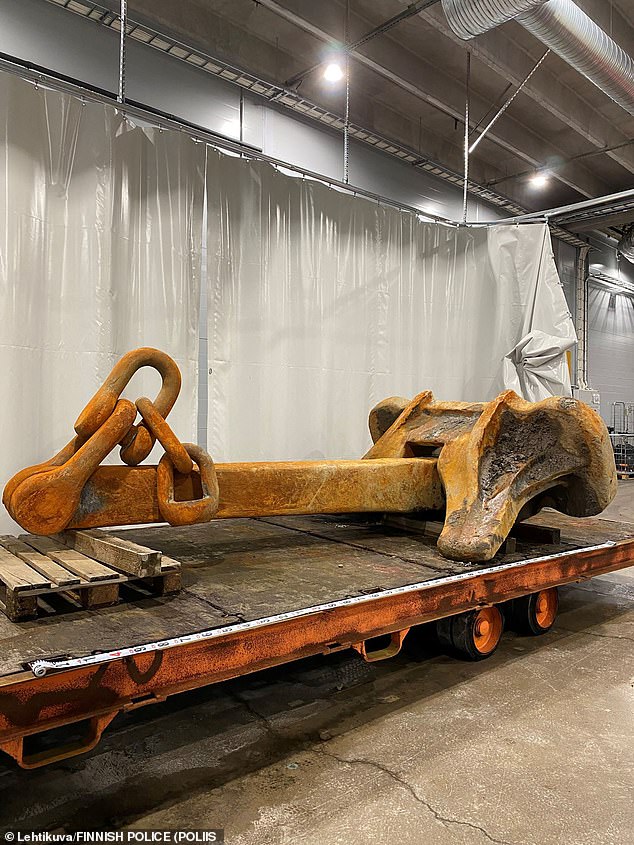Finland has displayed the huge anchor allegedly used by a tanker belonging to Russia’s shadow fleet to break several critical undersea cables on the floor of the Baltic Sea.
The anchor, presumed to belong to the oil tanker Eagle S, is in the hands of Finnish investigators after being recovered from the Baltic Sea.
Finland is currently conducting a criminal investigation into the Eagle S oil tanker, a ship linked to Russia, after its anchor was suspected of causing damage to the Estlink-2 power cable on Christmas Day.
The Eagle S is believed to be part of Russia’s so-called “shadow fleet”: ships carrying Russian crude oil and petroleum products, which are embargoed by Moscow’s invasion of Ukraine.
This vital cable carries electricity from Finland to Estonia across the Baltic Sea.
The incident severed the power connection on Estlink 2 between EU and NATO states Finland and Estonia on December 25 and caused uproar in Europe, with NATO Secretary General Mark Rutte vowing to “improve military presence in the Baltic Sea”.
Finnish police said on December 29 that they had found a trawl trail extending tens of kilometers along the seabed.
Investigators suspect the cables were damaged after the tanker’s anchor was dragged over them.
The anchor (pictured), believed to belong to the oil tanker Eagle S, is in the hands of Finnish investigators after being recovered from the Baltic Sea.
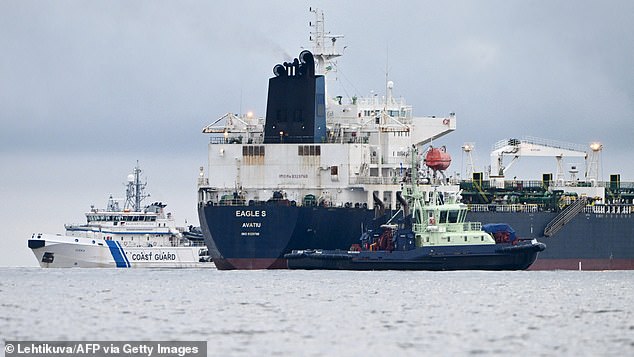
A photo taken on December 28, 2024 off Porkkalanniemi, Kirkkonummi, in the Gulf of Finland, shows the oil tanker Eagle S (C), flying the Cook Islands flag, next to the Finnish border guard ship Uisko (L ) and the tugboat. Ukko (right front)
Sweden last week sent an underwater rescue ship to help Finland in the investigation and on Tuesday said the anchor had been recovered.
“The HMS Belos located, raised the anchor and handed it over to the Finnish authorities,” Swedish navy spokesman Jimmie Adamsson told AFP.
Finland seized the tanker on December 28 and has prohibited eight crew members from leaving Finnish territory.
Finnish telecoms operator Elisa said on Monday that two of the four damaged telecoms cables had been repaired.
The Estlink 2 power cable has not been repaired yet.
Energy and communications infrastructure in particular have been attacked as part of what experts and politicians call Russia’s “hybrid war” with Western countries.
The Baltic is surrounded by several NATO member states.
In a surprising show of force, NATO today sent a fleet of ten ships to the Baltic to protect Europe’s crucial undersea cables after a series of sabotage attacks.
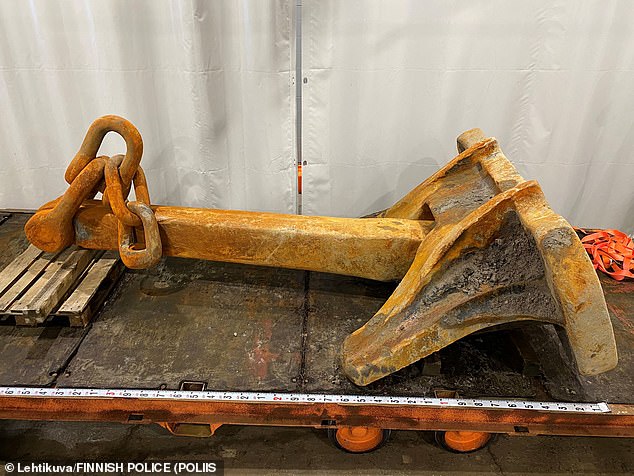
The anchor was allegedly used to cut a critically important cable at the bottom of the Baltic Sea.
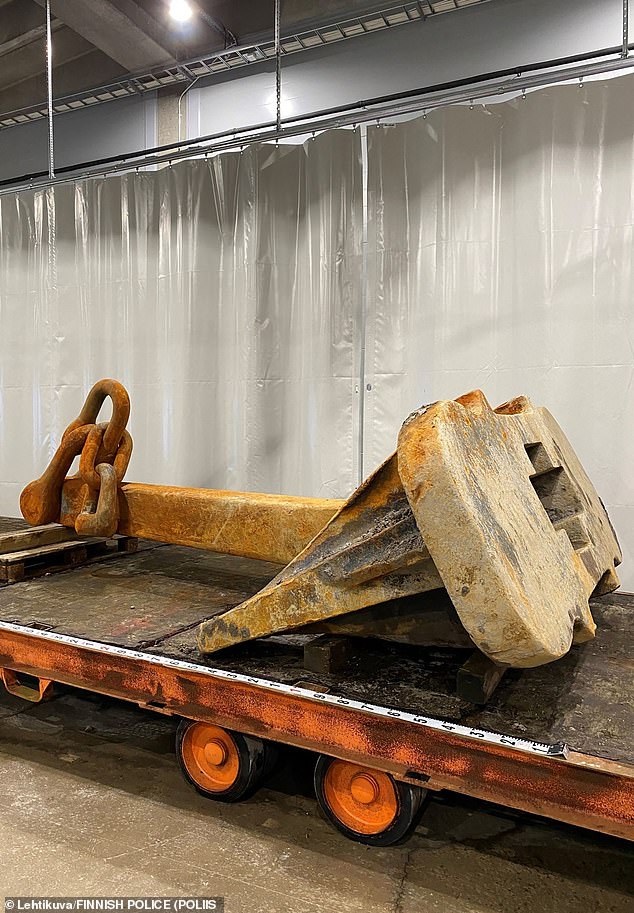
The anchor belonged to the Eagle S, a Russian-linked oil tanker believed to be part of the Kremlin’s Shadow Fleet.
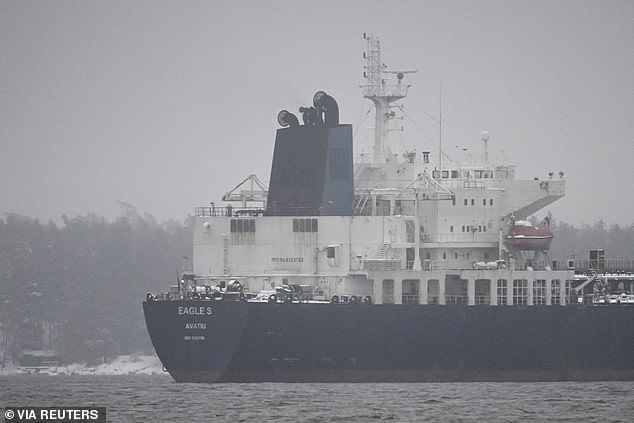
Finnish authorities said on December 26 that they were investigating a Russian tanker, called the Eagle S, that left a Russian port for alleged “sabotage.”
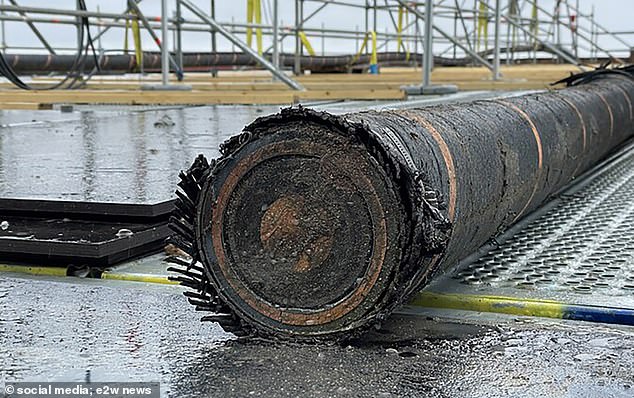
Estlink 2 power cable in Gulf of Finland snapped over suspected Russian interference
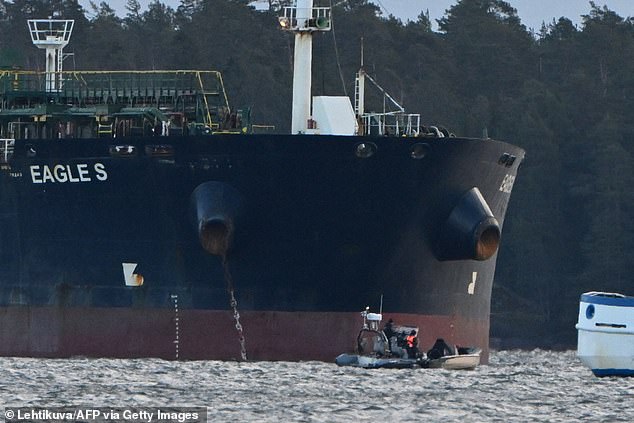
Finnish authorities announced on January 8, 2025 that they had banned the Eagle S oil tanker, suspected of belonging to the Russian ‘ghost fleet’ and having caused damage to five submarine cables, from sailing due to ‘serious faults’.
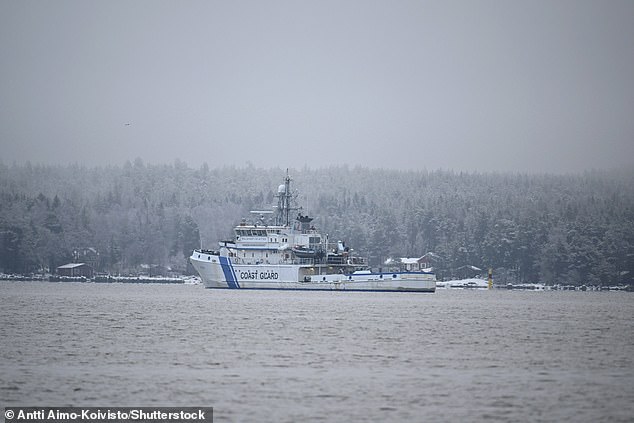
The Finnish Coast Guard vessel Uisko patrols near the oil tanker Eagle S (not pictured) anchored near the port of Kilpilahti in Porvoo in the Gulf of Finland, January 9, 2025.
The ships will remain at sea until April and will be strategically positioned near power and data cables in an effort to deter any attempts to destroy them.
It comes a week before Finland hosts a summit of NATO countries bordering the Baltic Sea to discuss security in the region, as the alliance increases its maritime presence following several undersea cable cuts.
The Jan. 14 meeting in Helsinki will focus on “necessary measures to protect critical underwater infrastructure,” a statement from the office of Finnish President Alexander Stubb said.
“The discussion will focus on strengthening NATO’s presence in the Baltic Sea and responding to the threat posed by Russia’s shadow fleet.”
The “shadow fleet” is made up of ships carrying Russian crude oil and petroleum products embargoed by Moscow’s invasion of Ukraine.
The vessels, often aging, operate with dubious owners or without adequate insurance.
Among those attending the meeting are NATO Secretary General Mark Rutte, the leaders of Denmark, Germany, Latvia, Lithuania, Poland and Sweden, and European Commission Executive Vice President Henna Virkkunen.
The President of Finland, Alexander Stubb, and the Prime Minister of Estonia, Kristen Michal, will co-host the meeting.
Finland became a member of NATO in 2023, ending decades of military non-alignment following the Russian invasion of Ukraine in February 2022.


